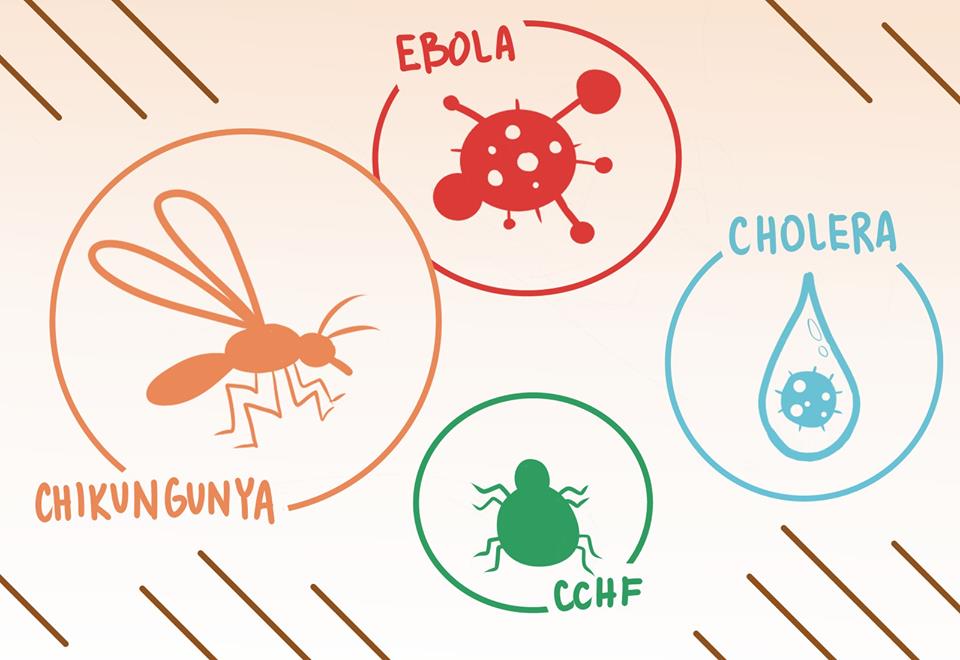
By Brian Pham
With the coronavirus in the spotlight, many diseases around the world are being outshadowed. It’s important to remember that these diseases have been declared public health emergencies by the World Health Organization and are just as deadly or even more deadly than the coronavirus.
Chikungunya:
This disease broke out in Tanzania and the Congo and is spread through bites by female mosquitoes. Its symptoms are characterized by sudden fever accompanied with joint pain. Other symptoms include muscle pain, headache, nausea, fatigue and rash. Most patients fully recover, but in old people this can be a cause of death.
Crimean-Congo Haemorrhagic Fever (CCHF):
This disease that is outbreaks in all of Africa, the MIddle East and the Balkans in Europe, is spread by tick bites. After being bitten by a tick, the disease is spread through the body and is incubated in the body for an average of 5-6 days. Symptoms are sudden, with fever, muscle ache, dizziness, neck pain, stiffness, backache, headache, sore eyes and sensitivity to light. The mortality rate for this disease is 30%. The disease is usually treated with the drug ribavirin.
Cholera:
This disease is a common sight in countries where communities lack clean drinking water. Communities who drink unfiltered water contaminated with the bacterium Vibrio Cholerae will contract this disease. Key symptoms are diarrhea, vomiting, pain in the abdomen and dehydration. Rarely, shock and seizures may occur in severe cases. There are 1.3 to 4.0 million cases of cholera, and 21,000 to 143,000 deaths worldwide due to the infection. Contraction can be prevented by being provided with clean water.
Ebola:
While the disease was at its height in 2014-2016, the disease still exists in many African countries today. Ebola is transmitted to people from wild animals and then spreads in the human population through direct contact with bodily fluids of infected people and material contaminated with those liquids. The initial symptoms include fever, headache, muscle pain, and chills. After a person may experience internal bleeding that causes vomiting or coughing blood. The average mortality rate is 50%. There is no proven treatment but taking medicine that helps with symptoms early on can improve survival and vaccines have been in developed to help prevent it.





